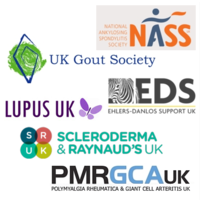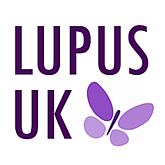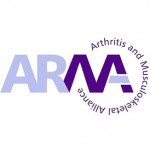
ARMA members representing patients with a range of musculoskeletal conditions have come together to highlight the impact of delays in diagnosis and share some of the resources that can help primary care staff reduce this delay.
Delays to diagnosis and treatment have a significant impact on:
- Patients – who will live with pain, increased risk of depression and complications which can be life threatening;
- NHS – multiple unnecessary referrals, cost of multiple investigations with no useful outcome, inappropriate use of A&E services and repeat GP appointments;
- Economy – lost productivity.
Although some of the delays are due to the patients not reporting symptoms, primary care clinicians can make a big contribution to reducing this delay.
More information about the causes and impact of delays.
What you can do:
- Support the campaign on social media #ThinkRheum
- Be aware of the symptoms of some of the conditions with long delays and think rheumatology:
Lupus
Axial Spondyloarthritis
Ehlers Danlos syndromes
Gout
Giant Cell Arteritis
Polymyalgia Rheumatica
Scleroderma
Lupus – average delay 6.4 years

Lupus is a disease which can present in many different ways, rarely do two people have exactly the same symptoms. Common symptoms of lupus include:
- Arthritis – affecting two or more joints, causing stiffness and pain
- Extreme fatigue and weakness
- Malar (butterfly) rash over the cheeks – often photosensitive
- Oral/nasal ulcers
- Hair loss
- Flu-like symptoms and/or night sweats
- Inflammation of the tissues covering the internal organs (serositis) with associated chest and/or abdominal pain
- Haematological disorders including anaemia
- Kidney problems, often first seen as proteinuria
- Seizures, mental illness or other cerebral problems
- Headaches, migraine
Axial Spondyloarthritis –

- Low back pain that started before the age of 45 years (particularly if it started before 35 years as this further increases the likelihood of AS) and has lasted at least 3 months
- Waking during the second half of the night because of symptoms
- Buttock pain
- Symptoms that improve when you move around
- Symptoms that improve with non-steroidal anti-inflammatory drugs (NSAIDs), for example, ibuprofen and aspirin
- A close relative (parent, brother, sister, son or daughter) with spondyloarthritis
- Any other type of arthritis
- Pain or swelling in your joints that was not caused by an injury
- Psoriasis

Common symptoms of the most common type of EDS, hypermobile EDS (hEDS) are listed however many can also appear across the other EDS types:
- Focal and generalised join pain, including dislocations
- Muscle spasms, muscle weakness, ‘restless legs’
- Fatigue, poor sleep, anxiety
- Gastrointestinal disorders (e.g. IBS, reflux, disordered gut motility)
- Fragile/stretchy skin, poor wound healing, hernias, easy bruising
- Headaches, brain fog, poor memory, poor concentration
- Palpitations
- Bladder/pelvic floor problems
Gout

Common symptoms of gout include:
- Sudden, unexpected (acute) attack which often develops during the night or early hours of the morning.
- Can reach its peak within a few hours, often making even the touch of bed clothes on the affected joint unbearable.
- Skin may be red and shiny
- Inflammation may be so severe that the skin may peel.
- Mild fever, a loss of appetite and a feeling of tiredness may accompany acute attacks
- Urate crystals start to form in and around the joints and under the skin as small white pimples (known as tophi).
- Untreated attacks will become more frequent and more prolonged
- Occasionally, stones may form in the kidneys.
Giant Cell Arteritis

- Headaches – sudden or gradual on one or both sides, mainly at the temples
- Tenderness of the scalp area over the temples
- Blood vessels at the temples may look or feel prominent
- Pain in the jaw or tongue when chewing or talking
- Blurred or double vision or temporary sudden loss of vision
People may also experience:
- Fatigue and/or depression
- Night sweats and/or fever
- Loss of appetite and/or weights loss
Polymyalgia Rheumatica
- Stiffness, pain, aching, and tenderness in the
- muscles around the shoulders, pelvis, and neck
- Worse early in the morning but easing during the day
- Difficulty getting out of bed, reaching and rising
- Inflammation and swelling in other areas, i.e. tendons, hands, feet, and joints
- Fatigue and/or depression
- Sweats and/or fever
- Loss of appetite and/or weight loss

Scleroderma
Common symptoms of scleroderma include:
- Hardened or thickened skin that looks shiny and smooth. It’s most common on the hands and face
- Cold fingers of toes that turn blue, white or red. This is called Raynaud’s phenomenon.
- Ulcers or sores on the fingertips
- Puffy, swollen or painful fingers and/or toes
- Painful or swollen joints
- Muscle weakness and fatigue
If you see any of the above patterns of symptoms – think rheumatology.

